When I was first in the market for a camera I chose Canon for their macro system and especially the capable – and unique – MP-E 65mm 1-5x macro lens. Over the past few years of using it I have found it near indispensable and always keep it on hand when in the field.
My main problem with the Canon macro system has come to be the Canon MT-24EX Macro Twin Lite Flash. While extremely versatile and compact, this little flash unit is quite harsh unless diffused well (like Alex Wild’s setup) and there are some annoying issues with its effective range and the flash head angle when coupled with the working distance of many lenses.
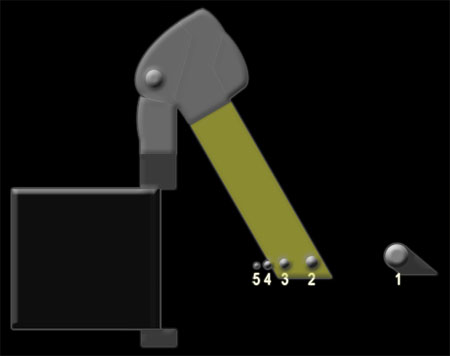
The diagram above depicts the working distances of the MP-E 65mm lens at 1:1 (1) through 5:1 (5) and the light cast by the Mt-24EX flash head when in the “default” position pointing down.
Quality of the Lighting
With my homemade diffuser setup the area from 2:1 to 5:1 is quite well lit – the lighting is very even and soft, but almost flat – without much depth. This can be fixed with an adjustable flash shoe which the the light and gives a far better result in many situations.
But at this angle the flash can cast a shadow on the near side of the subject particularly when photographing a very small subject and this led me to stop using the adjustable flash shoe option.

At magnifications less than 2:1 it is hard to get good lighting with the MT-24EX as the distance between the subject and camera is very often too great for even my versatile tracing paper diffuser.
In the example above, I used the MP-E 65mm lens with the flash diffused. As you can see the image on the left (taken at about 2.5:1) is quite well lit versus the image on the right (taken at 1:1).
If you compare the relative distances of the two subjects from the flash heads in the diagram above it becomes clear how the diffuser is far less useful at the greater working distance.
I have tried a variety of different diffuser setups, none adequately diffused light throughout the entire range of the 65mm lens let alone to the near range of Canon’s 100mm macro lens, even with one or two extension tubes.
Position/Angle of the Flash Heads
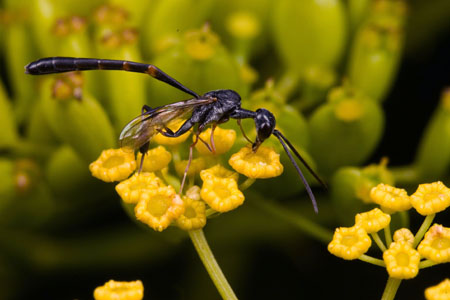
In the above image you can see how the light from the flash strikes the subject on from the side rather than the top – a major issue when using a lens in the 100mm+ range.
The mounting ring which attaches the flash heads to the lens raises them only a few centimeters above the lens barrel, a huge problem when trying to shoot a subject that is larger, as in the photo above.
Though this image was taken with a 100mm lens, two 25mm extension tubes, and a custom bracket (which held the flash heads up and out toward the subject) the lighting was no better than that from a ring flash, probably worse.
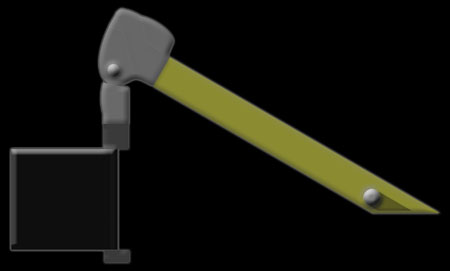
Above is shown the path of the light from the MT-24EX to a subject at the minimum focusing distance of the Canon 100mm macro lens.
Conclusion:
After over two years of using the MT-24 EX and a whole lineup of diffusers my conclusion is that this flash is very good for use with Canon’s 65mm 1-5x macro lens in the 2:1 to 5:1 range, providing lighting that, when adequately diffused, is very good.
But even with in the short span between 1:1 and 2:1 a diffuser which worked well in the former range is now of little to no use. This is the same when the M-24EX is used with a 1:1 50mm to 100mm macro lens due to the angle of the flash only a few centimeters above the lens.
Now I and anyone else can almost certainly make a diffuser which covers a given portion of the MP-E 65mm’s or 50mm/100mm range, but it is creating a diffuser that covers a greater range which will actually make this unit practical.
After spending two years plus trying to find ways to bridge the gap I decided to take a break from the Mt-24EX and tried using the Canon 580EX with a small softbox.
With this new arrangement I have been quite happy – only in one or two incidents has this combination presented some trouble which was easily correct with a minor adjustment of the flash’s position. And using this setup I can switch from the MP-E 65mm to a 50mm lens without having to fiddle with arranging the MT-24EX or diffuser, just a swift adjusting of the bracket and the flash is nicely positioned.

On the left a shot taken with the MT-24EX and on the right a shot taken with the 580EX – what a difference!
Please let me know what you all think about MT-24EX – I look forward to hearing what you all have to say!
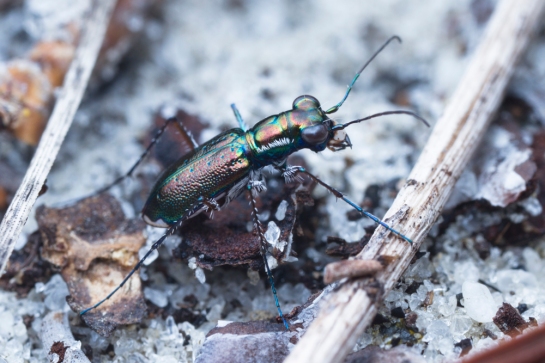
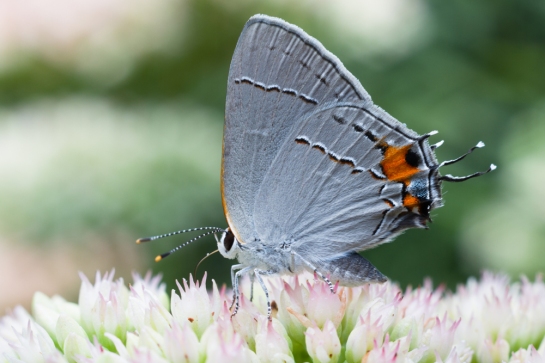
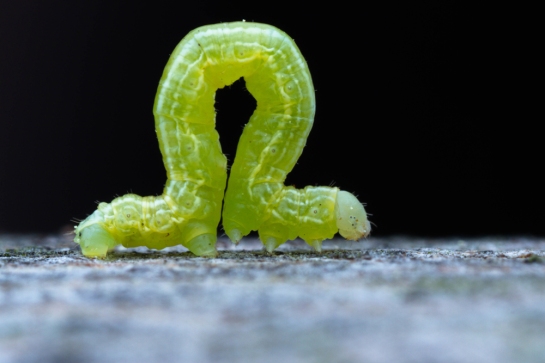
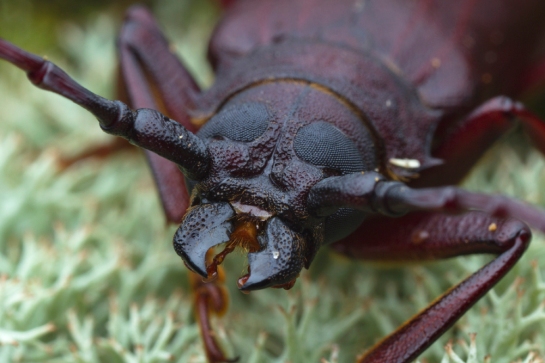

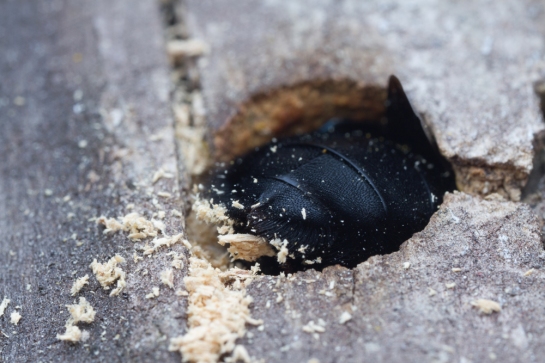
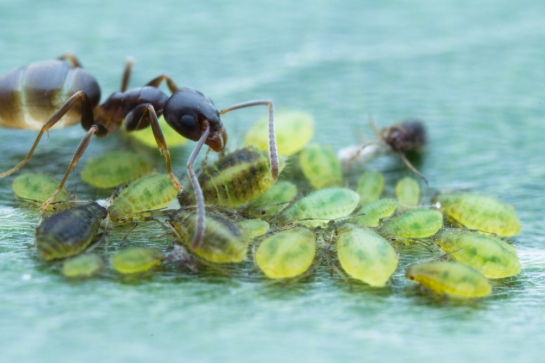
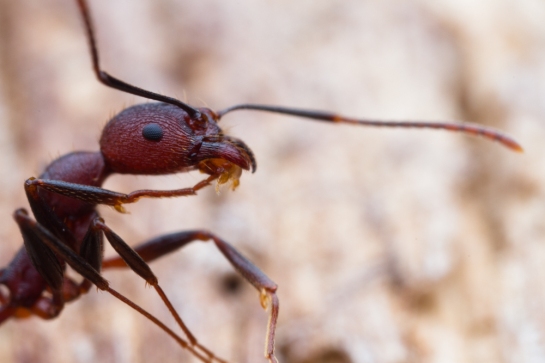
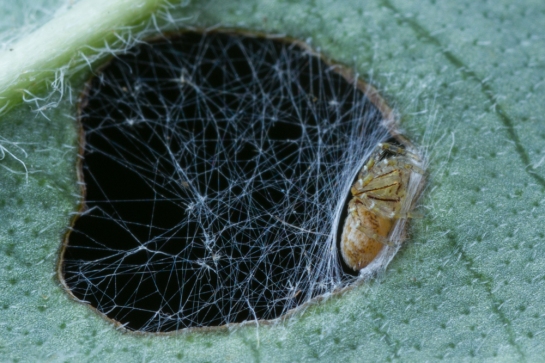
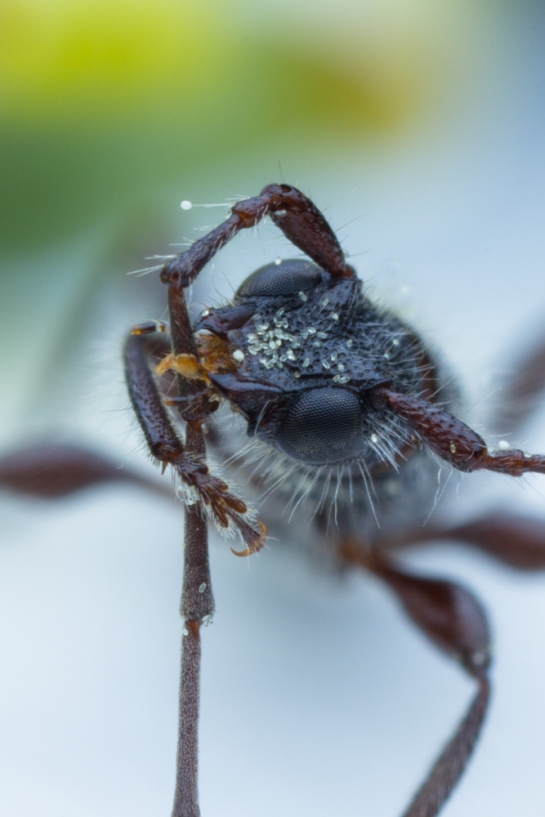
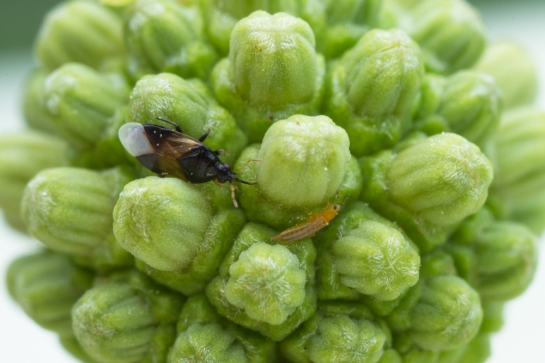






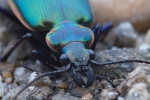
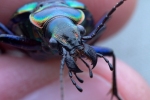
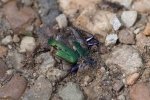





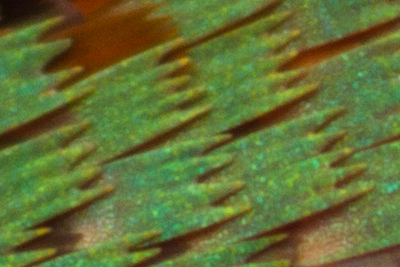
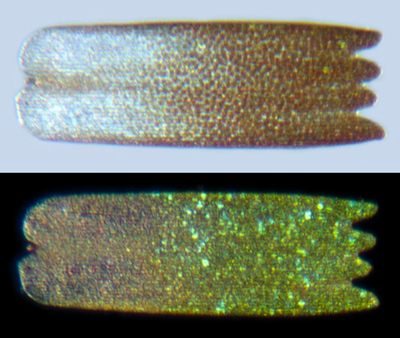




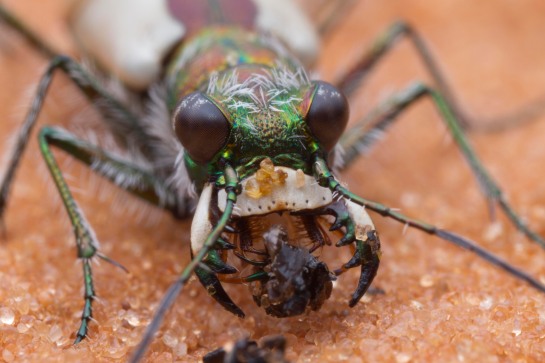
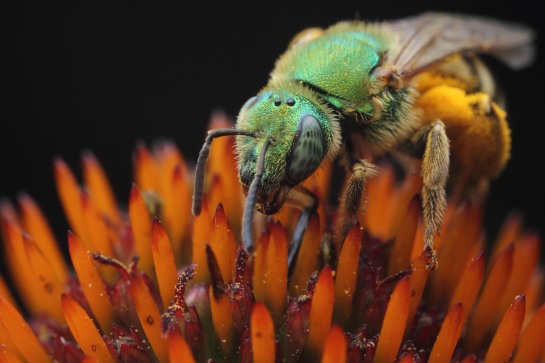

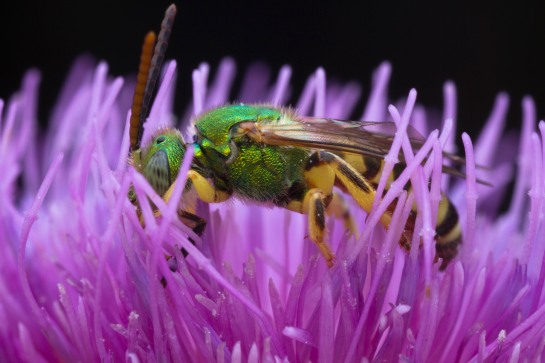
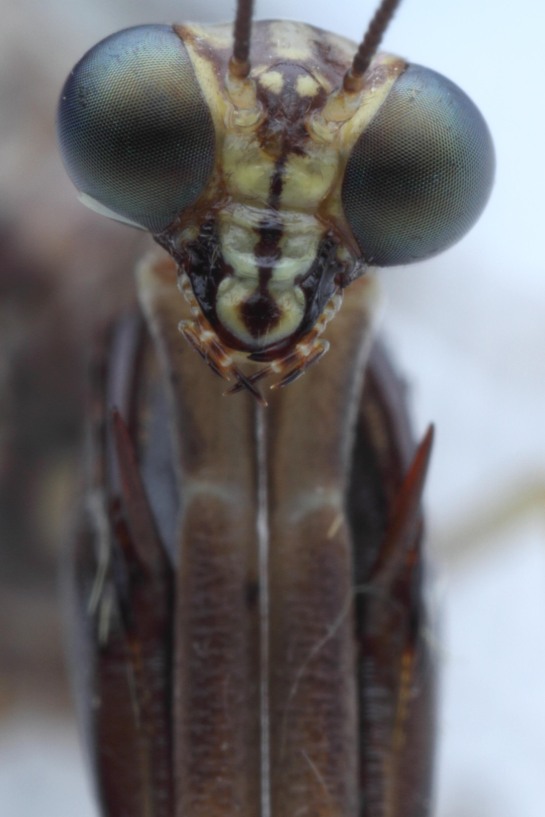
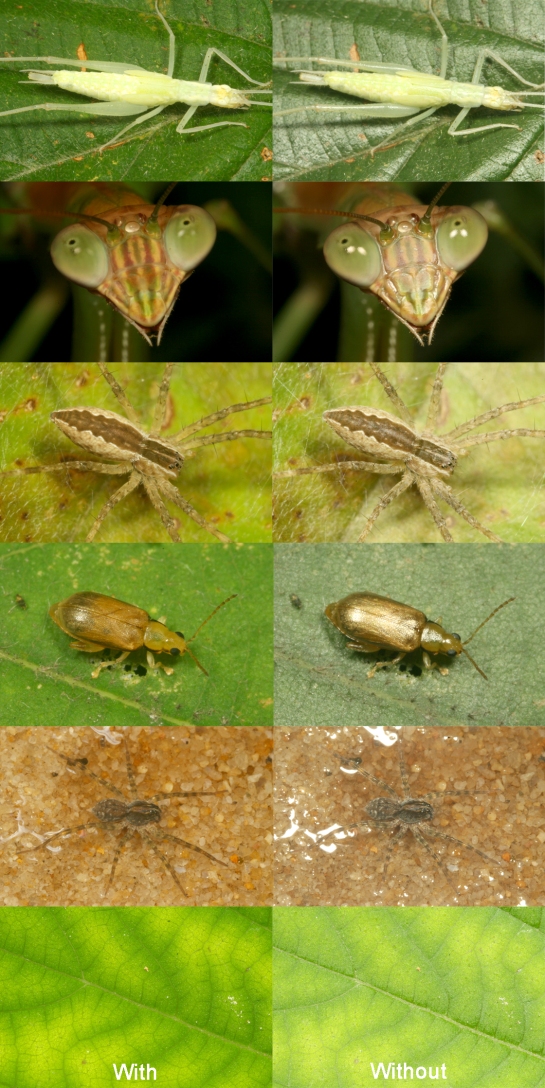
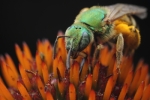
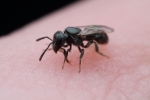


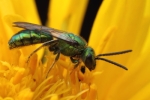
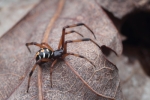
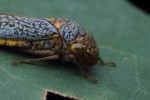
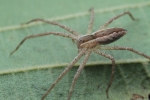





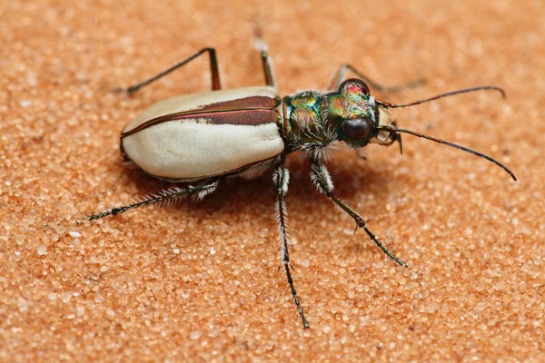


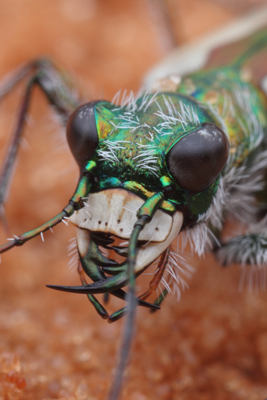

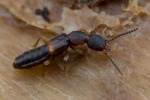
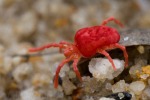
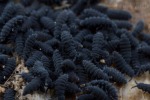

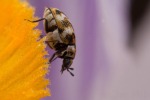
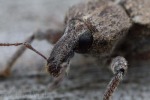

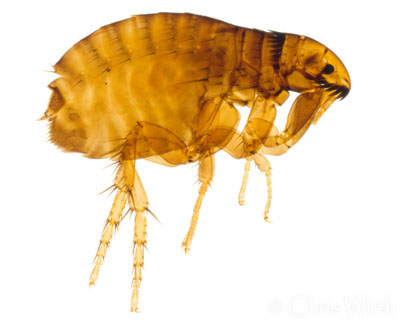
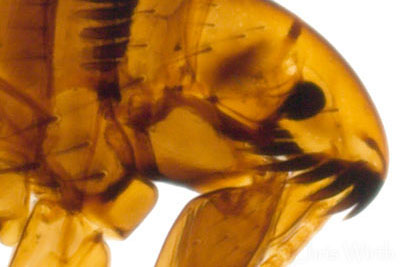

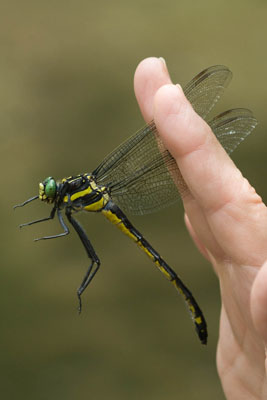
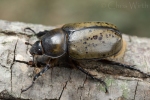
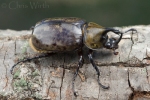
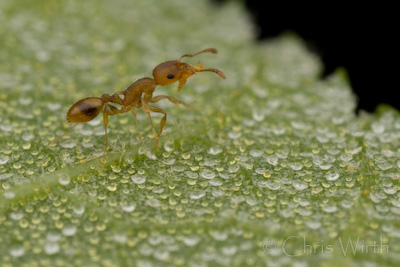 A minute ant carrying a thrip across a leaf
A minute ant carrying a thrip across a leaf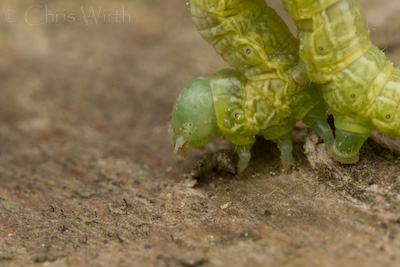 Meandering caterpillar on a tree trunk
Meandering caterpillar on a tree trunk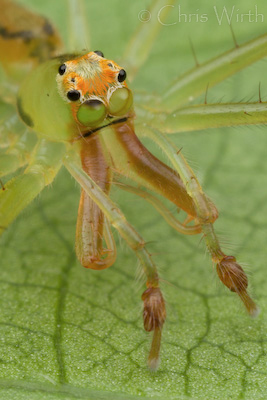
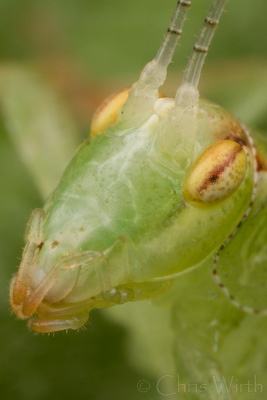
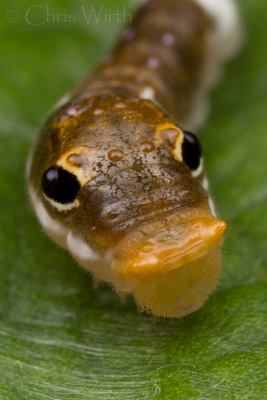 Spicebush Swallowtail caterpillar
Spicebush Swallowtail caterpillar